If you haven’t already done so, please read the FFY Introduction.
November Farm Tasks Overview
Here’s a breakdown of what we’re covering in May:
- Staying Motivated
- Ordering
- Shipping
- Digging & Storing Dahlias
- Planting
- Bulbs
- Corms
- Bare Root Peonies
- Business & Taxes: Keeping up with bookkeeping
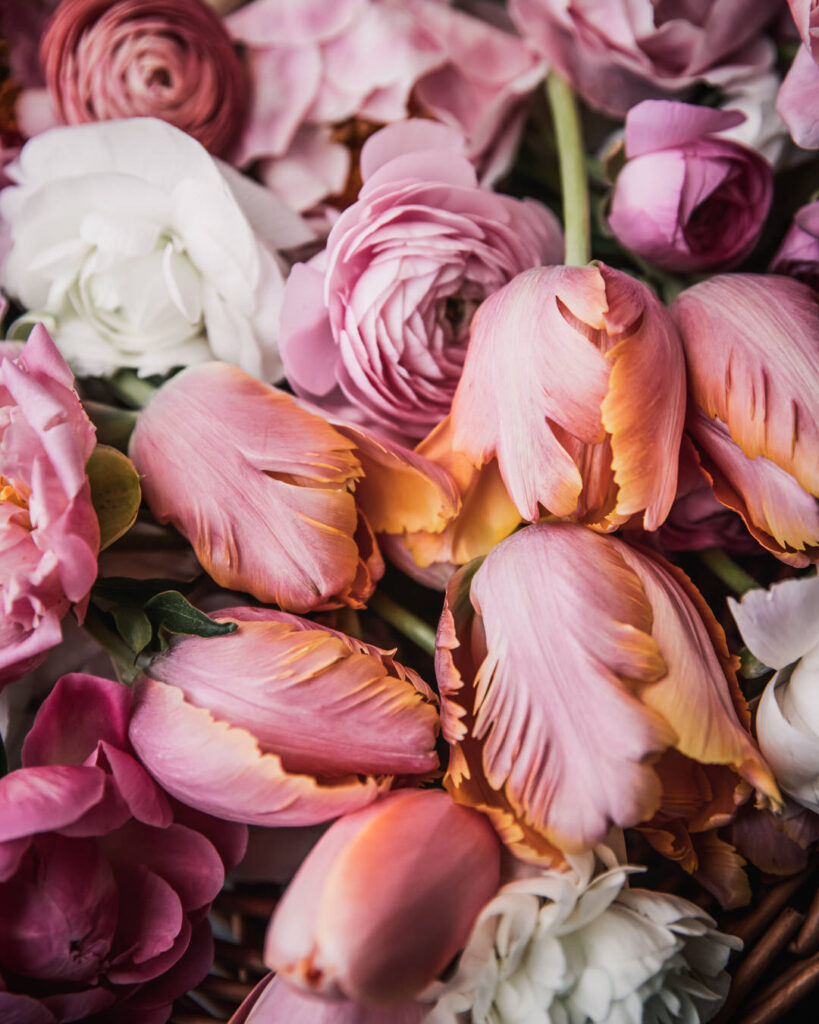
Staying Motivated
Thinking about the potential of the season ahead is always extremely motivating for me. It’s the possibility that keeps me digging thousands of tubers, planting thousands of bulbs, packing one more box, burying one more peony. However, I also LOVE the holidays!
I always tell Matt that he needs to cut me off if I even *think* about the holidays before we finish all of our fall chores, or else I’ll just be camped out watching Christmas movies. As the farm has grown, our fall chores have gone further and further into November. I like to be wrapped up by Thanksgiving, but we will be working a little into this holiday season.
And that’ OK. I’m forever grateful to the farm and if it means furthering this dream, I’ll take it. I will just be humming Christmas Carols as we plant the last of the bulbs the weekend after Thanksgiving.
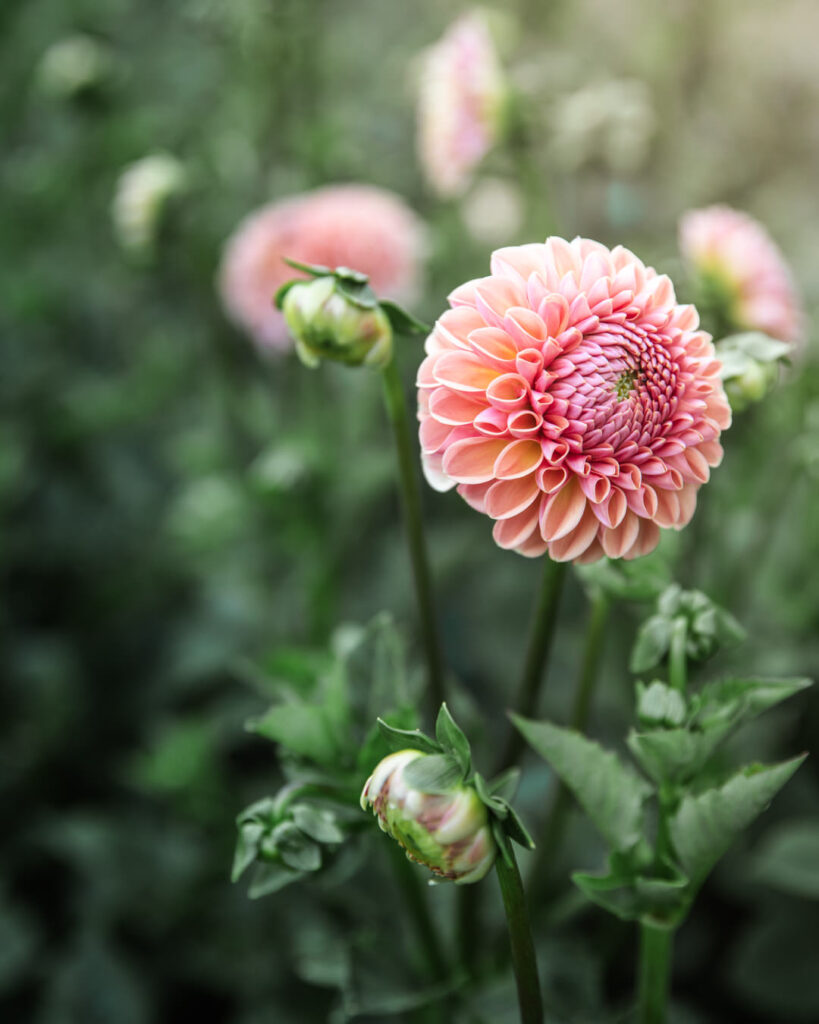
Ordering
November is so busy, I’m not ordering much, BUT: Let the dahlia madness begin! I plan on participating in my first dahlia sale of the season this Friday (Missy’s Dahlias). I haven’t had a chance to refine my wishlist and set alarms for the upcoming sales, but it is one of my favorite winter traditions (while xmas movies play in the background). Be sure to check dahliaaddict.com for upcoming sales.
Shipping
If you ever plan on selling bulbs, corms, or bare roots, this time of year is deep in shipping. It’s a lot to juggle with the other fall tasks, but we really enjoy it. We started with shipping dahlia tubers, then customers started asking about bulbs, then corms, and finally peonies. At first, we made a lot of mistakes fumbling through it, but now we have a good system in place.
Once you get the hang of shipping and are set up for the process, it’s pretty easy to add new offerings. Next year for FFY, I have plans to add articles that expand on some of these more niche topics (like a deep dive on shipping retail: supply lists, pricing, sales, packaging, discounts, carriers, inspections, labeling etc). Drop me a line if that interests you.
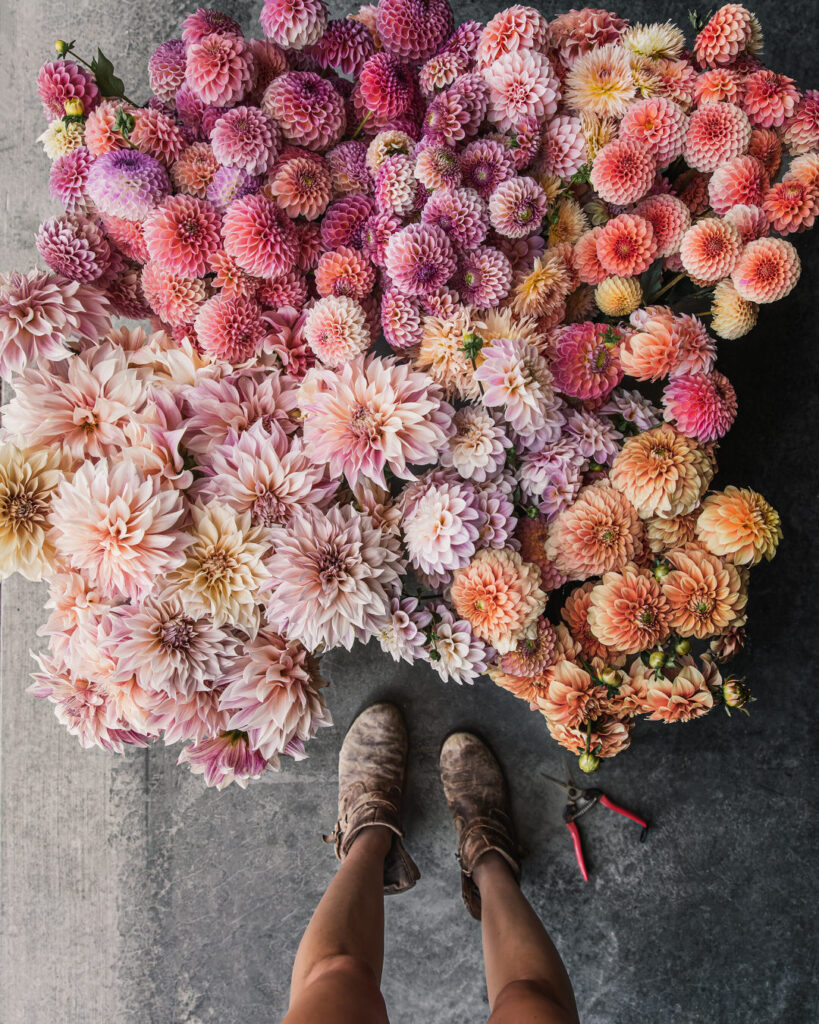
Dahlias
I included this portion in October, but I’m also going to leave it for November because there are a few new folks around here. And lift our dahlias well into November, ahem.
Late October through early November is when we embark on the monumental task of lifting the dahlias for their long winter storage. Perfecting dahlia storage is tricky business. There are different schools of thoughts on when to dig and divide, and even more ways on how to store them. Methods are highly dependent on climate, environment, and what works best for each grower. While I’ll share exactly what we do, I’ve also. listed below a few schools of thought from leading growers in the industry, including links to the more in-depth articles and practices.
General Information
The American Dahlia Society (ADS) provides the following pictorial guide of digging and diving, as well as an in-depth article on digging, dividing, and storage.
Johnny’s Seeds makes the following recommendation: In the fall, after plants have died back but before the ground freezes, cut plants back to 2-4″ above the soil line and carefully dig tubers and remove excess soil. Let tubers cure for 1-3 days in warm location with some humidity, out of direct sunlight with ample air flow. Pack tubers in peat or vermiculite inside perforated plastic bags, boxes or crates.

Ultimately
While everyone seems to have their own tricks (and superstitions, ha), virtually all growers are aiming to store tubers between 40–50F (4.4–10C) at proper humidity. Huber recommends mimicking a root cellar, with stable temperatures in the 40s and humidity at 80-90%.
While temperature is a bit more precise and easy to capture, what constitutes as “proper” humidity has a lot to do with the surrounding environment and the containers and medium in which the tubers are being stored. In other words, a sealed plastic container may have different humidity than the surrounding room.
Ultimately, if tubers are too wet, they will mold and possibly rot, and if they are stored too dry, they will shrivel and possibly desiccate/die. Virtually all growers agree that a little shriveling is perfectly normal and that no matter the storage method, tubers should be inspected periodically (at least monthly) to ensure proper storage.
Here are a few things to consider:
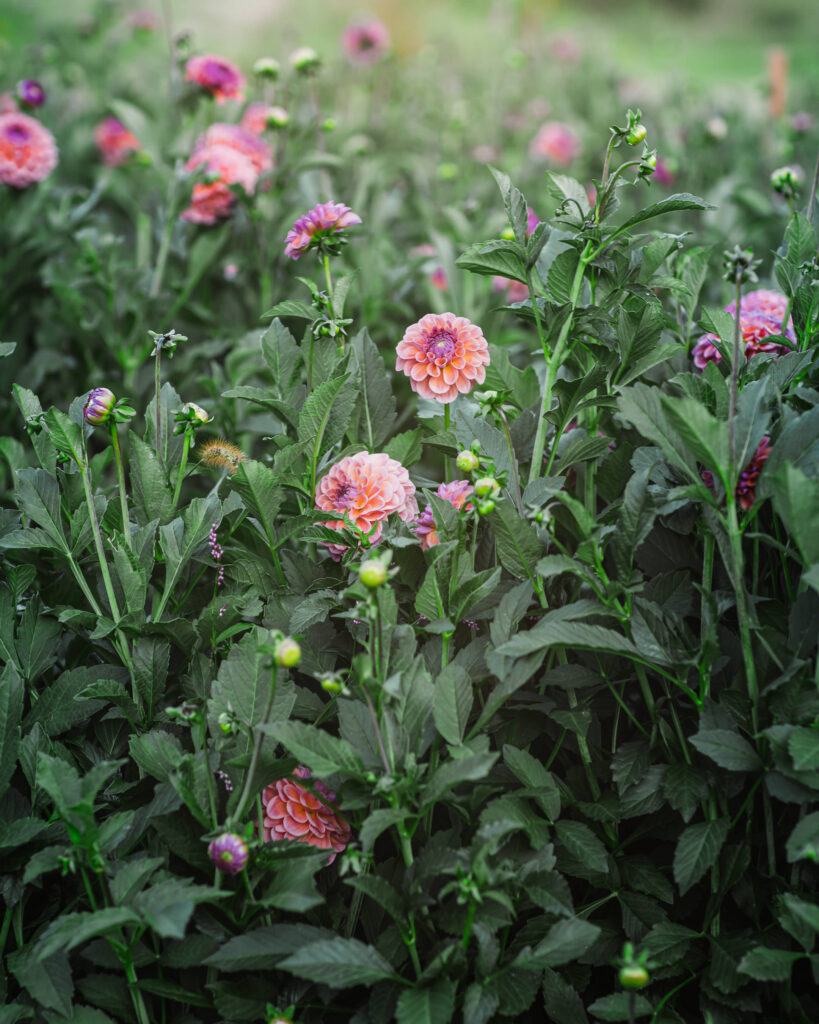
Things to Consider: When and How to Cut Back?
Before digging, most growers recommend cutting back plants to 2–4 inches above the soil line, so digging is more manageable. While some growers recommend cutting back after frost and allowing to sit 10–14 days, others state this can promote rot if conditions are wet as moisture can collect in the hollow stems. The ADS recommends dipping cutting tools in a solution of one part bleach to ten parts of water before switching between one plant and the next to avoid spreading virus.
Things to Consider: When to Dig?
While Erin Benzakein notes that it’s important to let tubers “cure” properly before digging, recommending waiting to dig after a hard frost or two, which toughens the skin on tubers, Kristine Albrecht claims that frost has no effect on maturing tubers. She maintains that maturation of tubers starts at the solar equinox in June, requiring 90 to 100 days from the June 20 Equinox. She notes that while frost has become a convenient placeholder in the calendar, it’s not the frost, it’s the passage of time after the summer equinox. However, Benzakein notes that tubers dug without proper curing had a higher rate of shriveling and seemed more susceptible to rot in her experience. She maintains that while tubers need to properly cure, they do need to come out of ground before the ground freezes or they won’t survive.
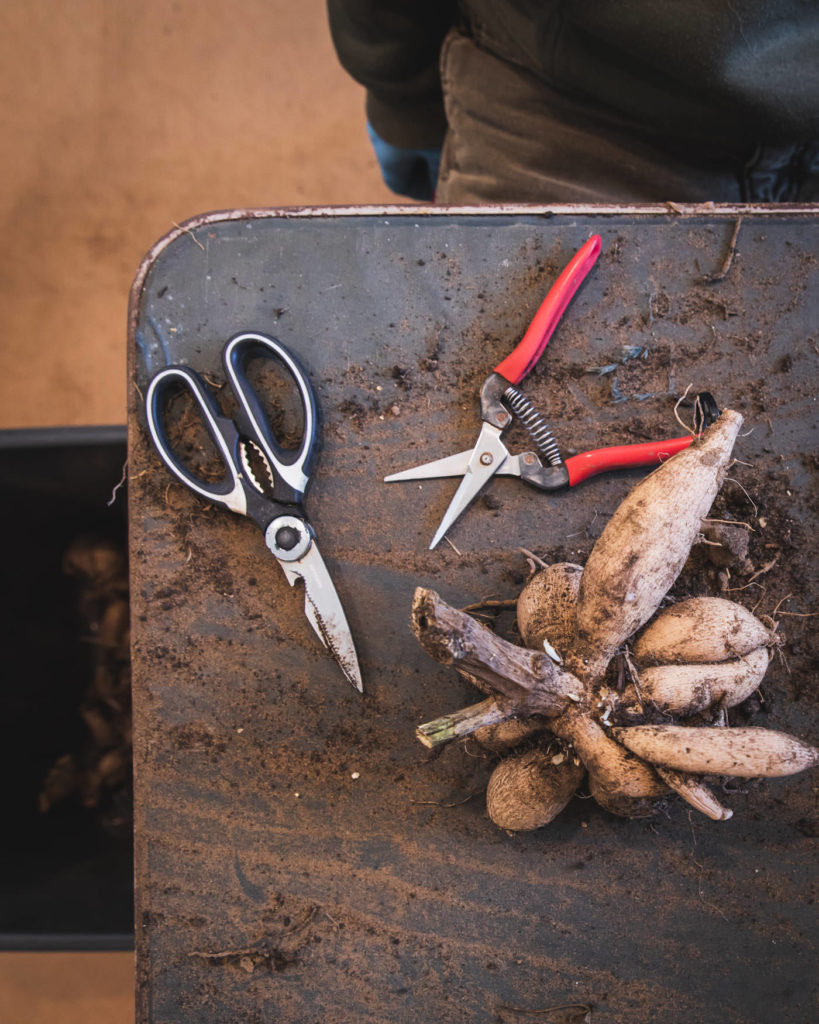
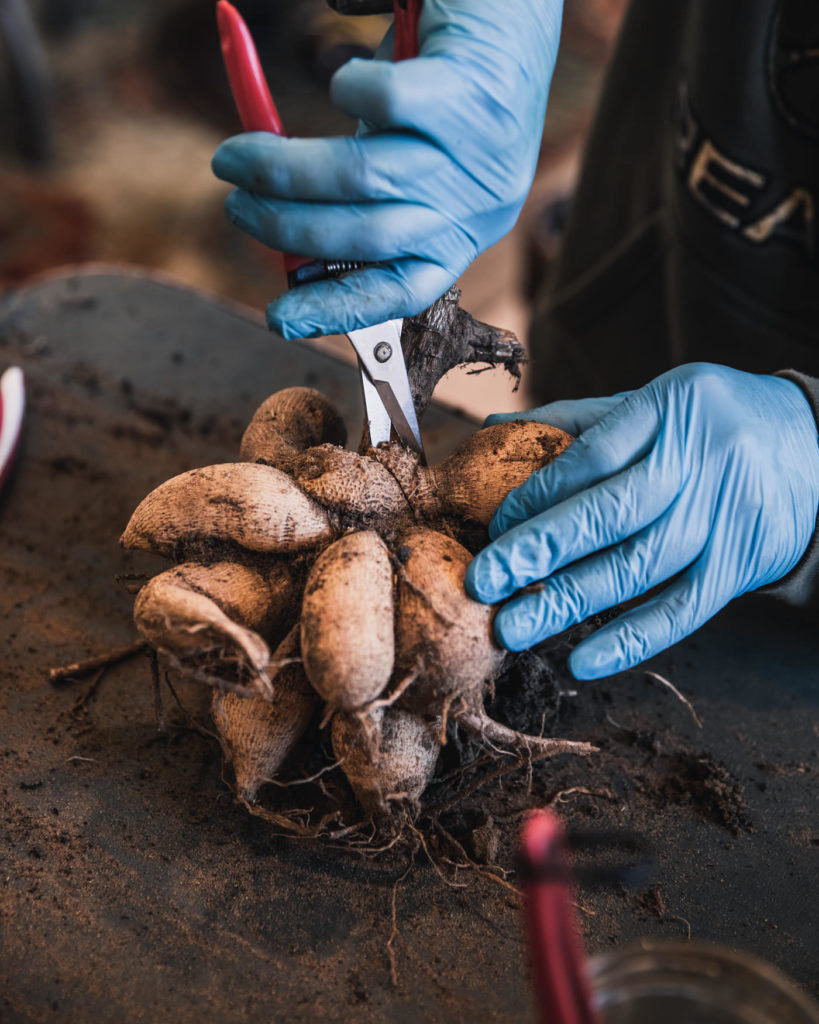
Things to Consider: When to Divide?
How one stores also depends on when one chooses to divide their tubers. Some growers wash and divide tubers right away, while many growers, like Erin Benzakein and LeeAnn Huber, store right away until they have time to divide. Benzakein recommends leaving a light layer of soil on clumps rather than washing right away. Huber overwinters in a root cellar in open crates lined with paper, kept at 42F, and filled pine shavings because she has moisture. She recommends 80–90% humidity. Huber also mentions utilizing a cooler in her basement for dividing.
Proper Labeling
All growers stress the importance of proper labeling, often recommending double or triple labeling systems (tubers are easy to mix up!!).
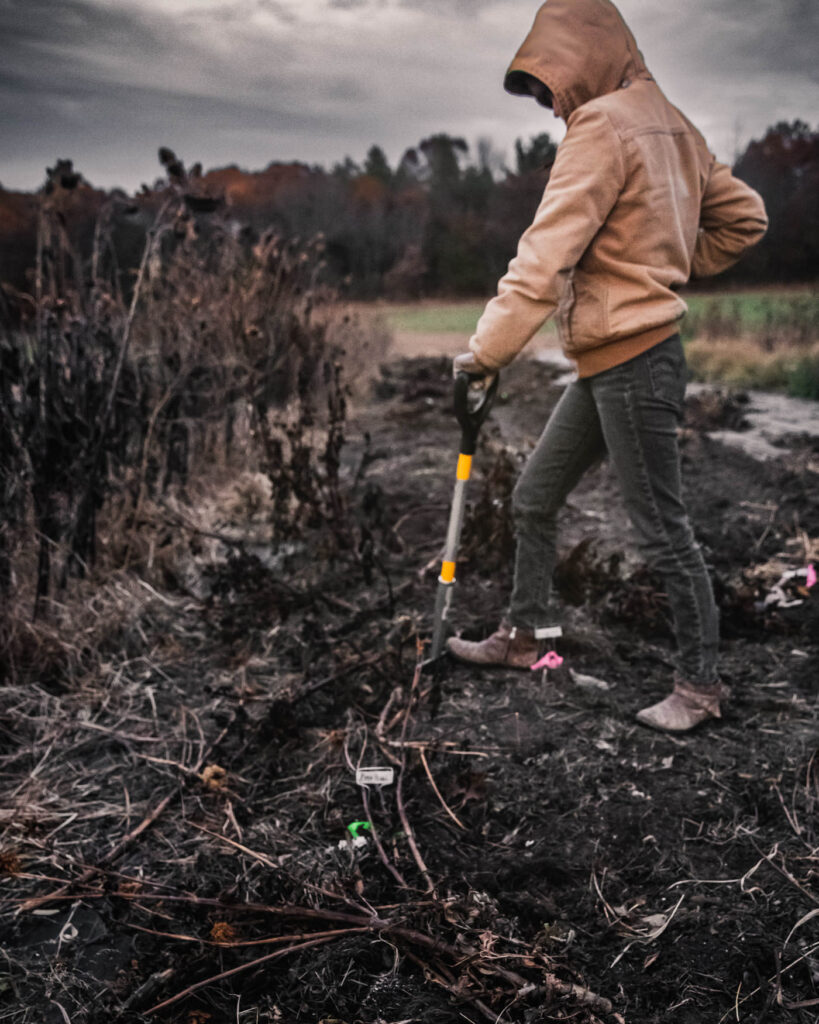
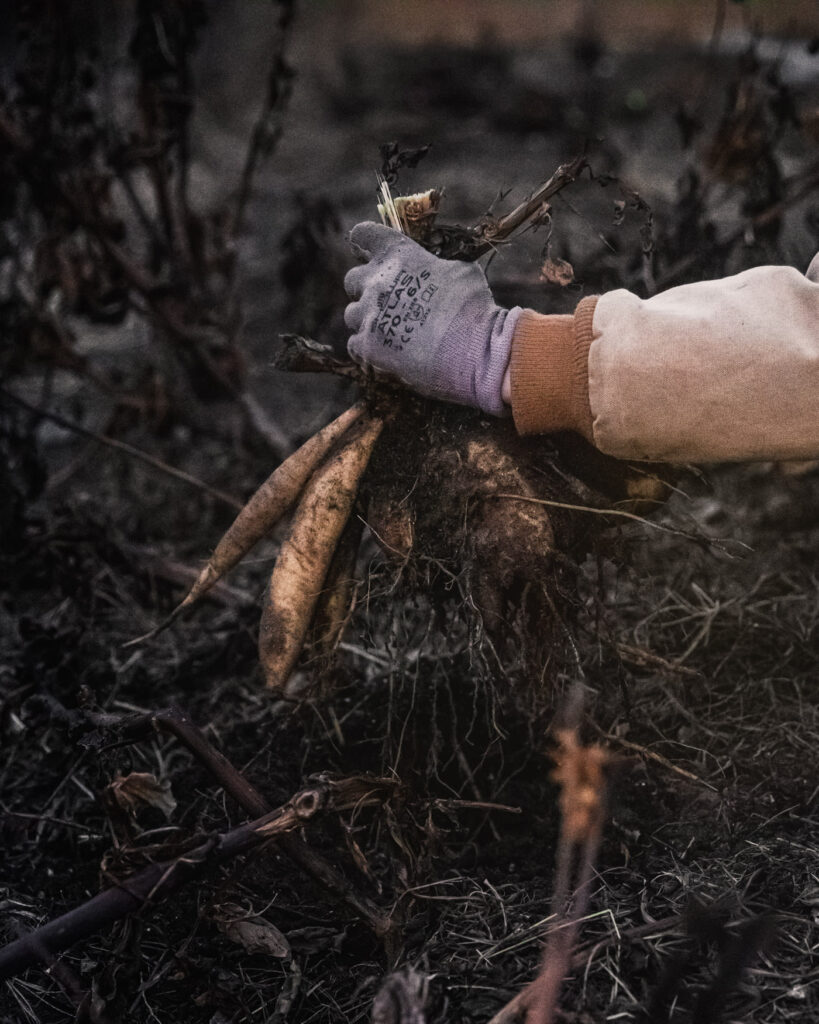
Digging and Storage at PBF
Over the years, here is what we’ve found works best for us.
Digging
Prior to digging and before a killing frost, I verify all plants are labeled correctly by adding a triple label. Because we sell our tubers, we like to take this extra step. Once frost hits, there’s no going back. I also flag plants with green labels for potential sellers and pink labels for keeping back (there are a lot of reasons for this, but some are: wanting to build stock, new seedling, a plant that may be displaying genetic mutation). These flags and labels follow the plants throughout the entire process.
We dig our dahlias after at least one hard frost, often times two, not because I know whether or not they need to cure for certain, but because we are extremely busy in the fall. During this same time of year, we are shipping for our fall sale, as well as preparing for fall planting of our own. Our season is far too short to dig before frost, and I cannot imagine a scenario in which we would do this.
While we cut stalks first and then dig, how long they sit really depends on what we have going on. Sometimes, they’ll sit for a few days, other times we dig them right away. Either way, they can collect moisture, so I always tip them upside down to remove and pooled moisture, and try and place them this way into the bulb crates.
Per ADS recommendations, we do keep multiple loppers in a bucket with 10% bleach solution and switch loppers between cuts. We’ve used both forks and shovels for lifting, both work, I’d say the favorite is sturdy forks. Once lifted, we shake a little bit of the dirt off, but maintain quite a bit as I find this is better for storage. They go into black bulb crates, and as noted, if it seems like the stem has a lot of moisture (sometimes frozen), I’ll set them upside down in the crate.
Like many flower farmers, we divide much later in the winter (January/February). This is not only due to time constraints, but tubers have historically stored well for us in clumps with dirt attached. For this reason, the tubers go into the crates, and straight into storage. They only sit out for as long as it takes us to get the crates from the field to the shop.
Between digging and storage, I want to avoid letting the tubers get too dry. I know some growers recommend letting them dry out, and perhaps you want to do this if you’re washing them, or working with a really humid environment, but my goal is to get them into storage. Especially avoid setting them on concrete, which can suck up moisture.
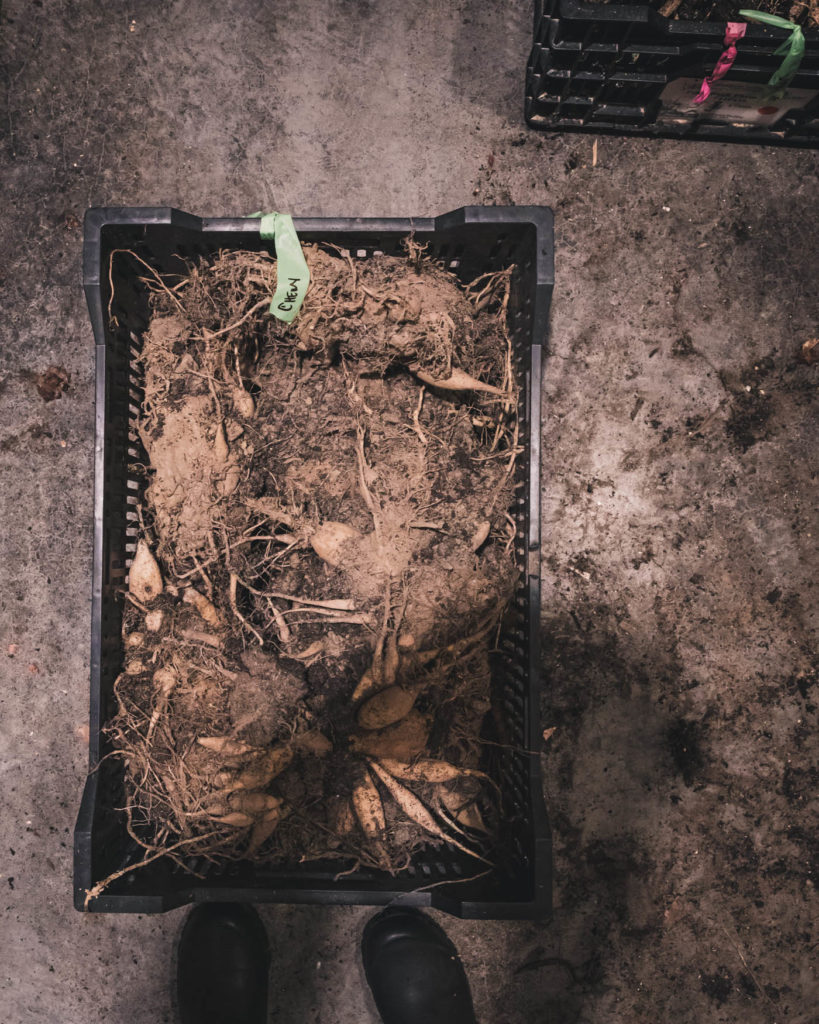
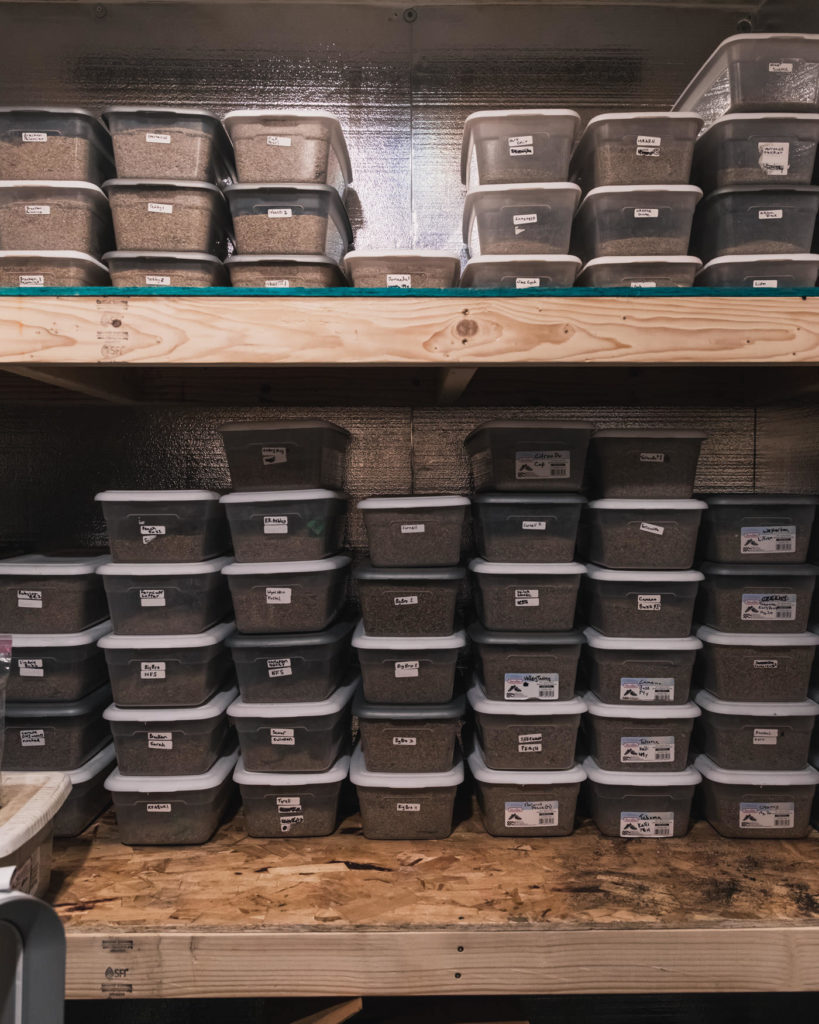
Storage Prior to Dividing
Crates are stacked in our walk-in cooler, which is converted to a heater for our cold climate. In the summer, the cooler runs on a CoolBot system connected to an air conditioner. Most growers simply connect their CoolBot to a heater over the winter for this purpose. We actually use a heater set at 44F, but this is simply because we received this heater as a gift and it’s super efficient. However, it’s expensive, and if it hadn’t been gifted to us, we’d have just connected an inexpensive heater to our CoolBot system.
P.S., if you want a coupon for $25 off a CoolBot system, use this link.
While the heater is set to maintain 44F in the cooler, we also have this thermometer which measures the high and low temperature and humidity for the past 24 hours. During winter, our cooler stays at about 70% humidity, which has historically been just fine for us. If it dips, we’ll put a bucket of melted snow in there. I do have a backup humidifier with an automatic controller, but we haven’t felt the need to use it yet.
Eventually, in late winter, we’ll begin dividing and then transfer to plastic shoeboxes.
P.S., we inevitably run out of crates every year, in which case we use cardboard boxes (but we do prefer the crates for stacking and storage).



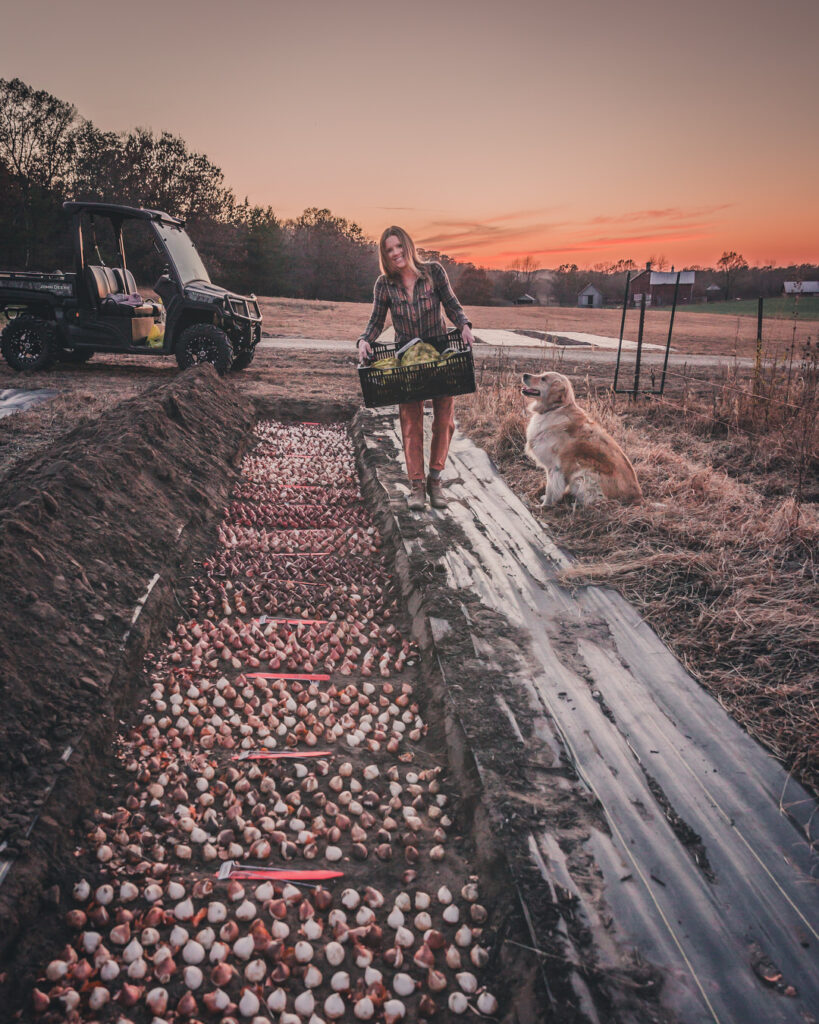
Planting
Bulbs
We plant our bulbs trench style, 6–8 inches deep. I plant tulips very close together, almost touching, like eggs in a carton. I plant narcissus a little further apart (a few inches).
Every year, I say I am going to try the raised-bed Jenny Love method, but then fall happens, and I never do. I used to dig the trenches entirely by hand, but now, Matt digs at least 90% with the tractor.
Despite what most growers say, I don’t water in bulbs (the exception being those planted in the high tunnel). Our falls typically have a lot of rainfall and our winters a lot of snowfall, so moisture is not an issue.
I have planted our bulbs straight into Thanksgiving, without issue, even in our cold zone (wholesale orders seem to continue to have delay after delay). I’m of the opinion that if the ground can be dug, you can still plant bulbs (and peonies for that matter).
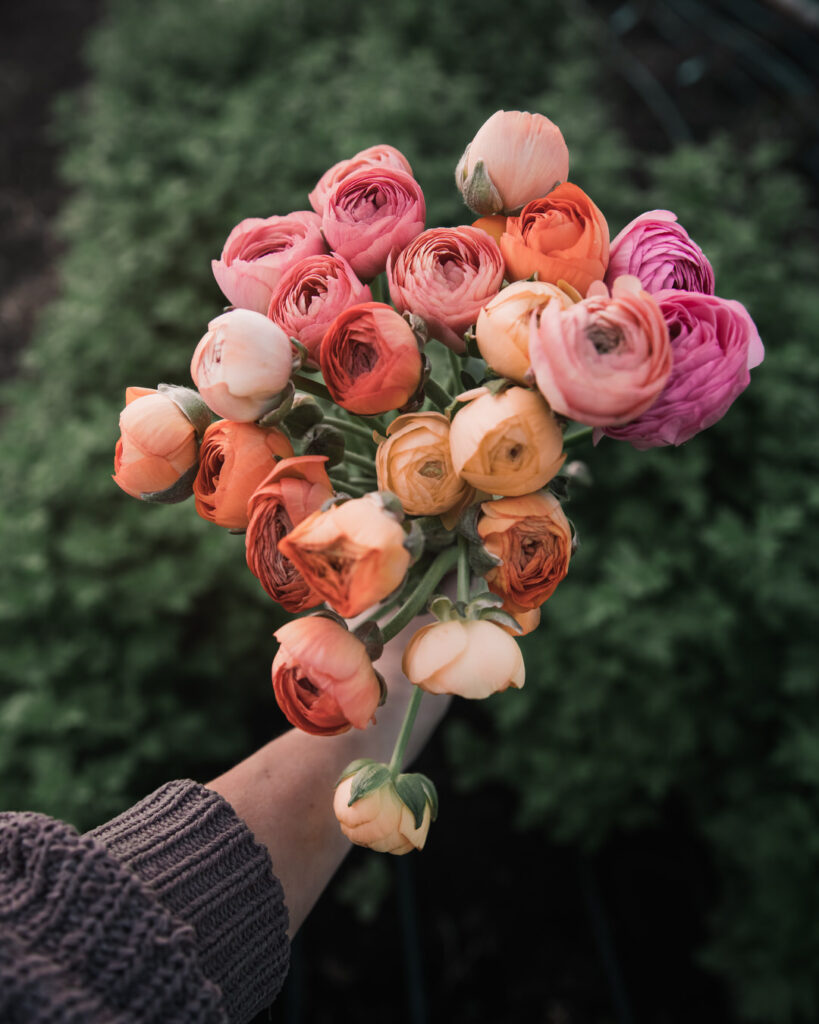
Corms
I *plan* on repeating my ranunculus overwintering experiment, but I am still playing catch up on fall planting. For this, I soak corms and plant directly in the high tunnel to overwinter, without presprouting (you still have access to the details here through December).
Peonies
I can’t stop ordering peonies, so I keep telling Matt that they (and other perennials) are my retirement plan. While I’m half joking, the half serious part of me says this because peonies are a long-term investment. You cannot harvest them for about three years (depending on your stock and who you ask). Their payoff comes later on. And in my book, the long game is worth it if you’re willing and able to play.
I’m always thinking about how we can make farming viable long term, especially into our later years. If you’ve been here since February, you may remember the Strengthsfinder test. While I didn’t share my personal results there, it comes as no surprise that I am intensely strategic (Futuristic | Input | Strategic | Ideation | Activator).
Peonies are an investment in time and money, but they can be incredibly worth it in the long run. Once you can harvest peonies, not only are they incredibly easy to harvest, but they also have great storage life, high productivity, premium price tag, low maintenance, and never need to be planted again (less labor over time). Plus, you can always re-sell their bare roots (they aren’t going into the compost pile like tulip bulbs).
So anyway, we are planting MORE peonies. When it comes to planting peonies, it’s incredibly important to plant peonies at the proper depth. The ideal depth is to plant so that the eyes are 1–2 inches below the soil. This is deep enough to protect them from cold winter temperatures, but if they are planted deeper than 2 inches, they may fail to flower. Plants should be placed at least 24″ apart.
Most sources recommend planting 6 weeks before the ground freezes. That’s probably really good advice that everyone should definitely follow, but I never do 🙂 We will likely be planting peonies on Thanksgiving morning before the food and fun begin! It’s a good way to “earn” your Thanksgiving feast (and cocktails).
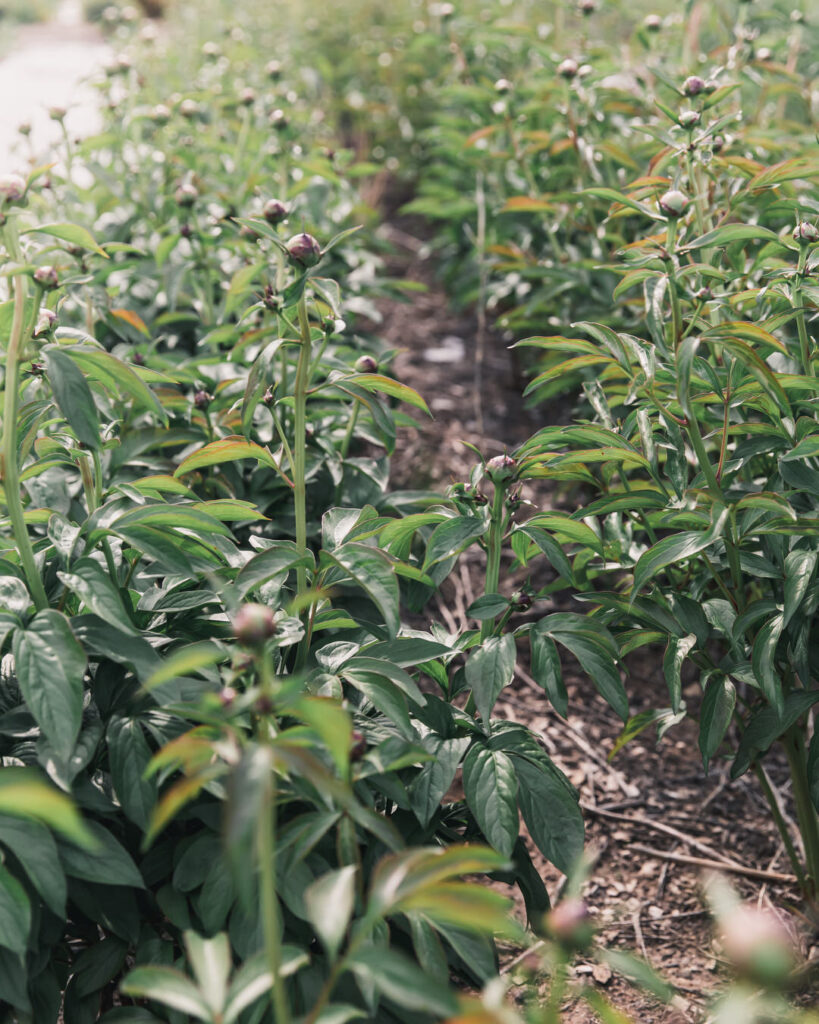
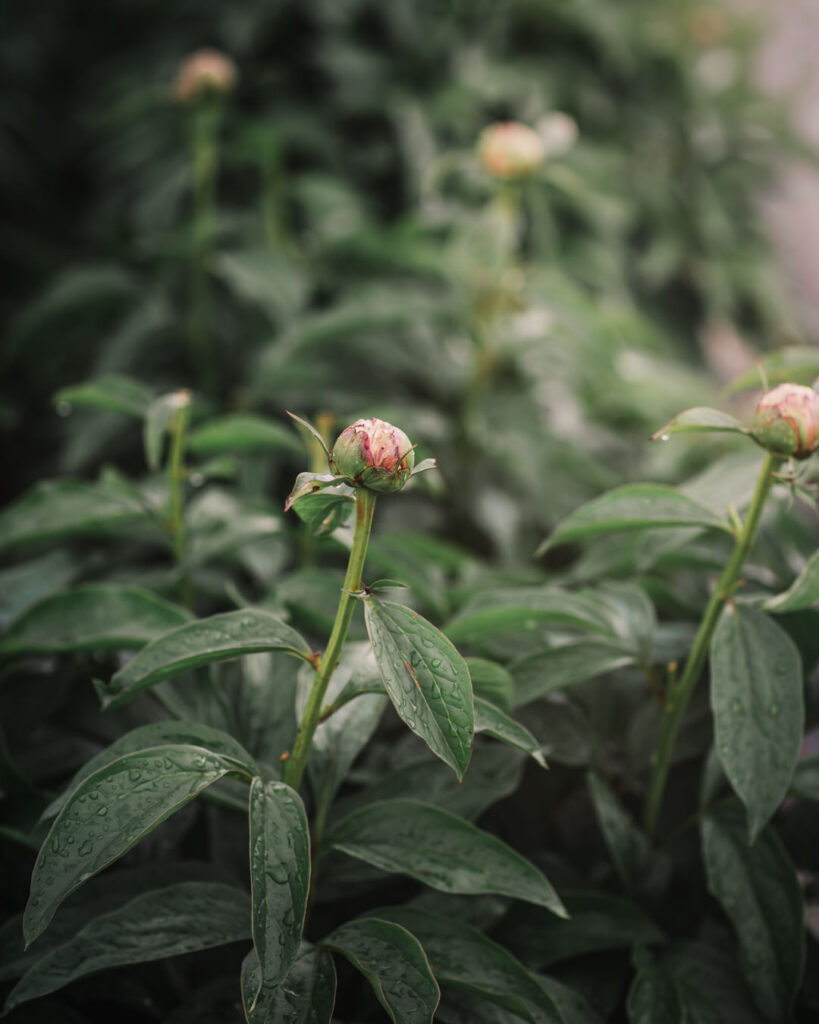

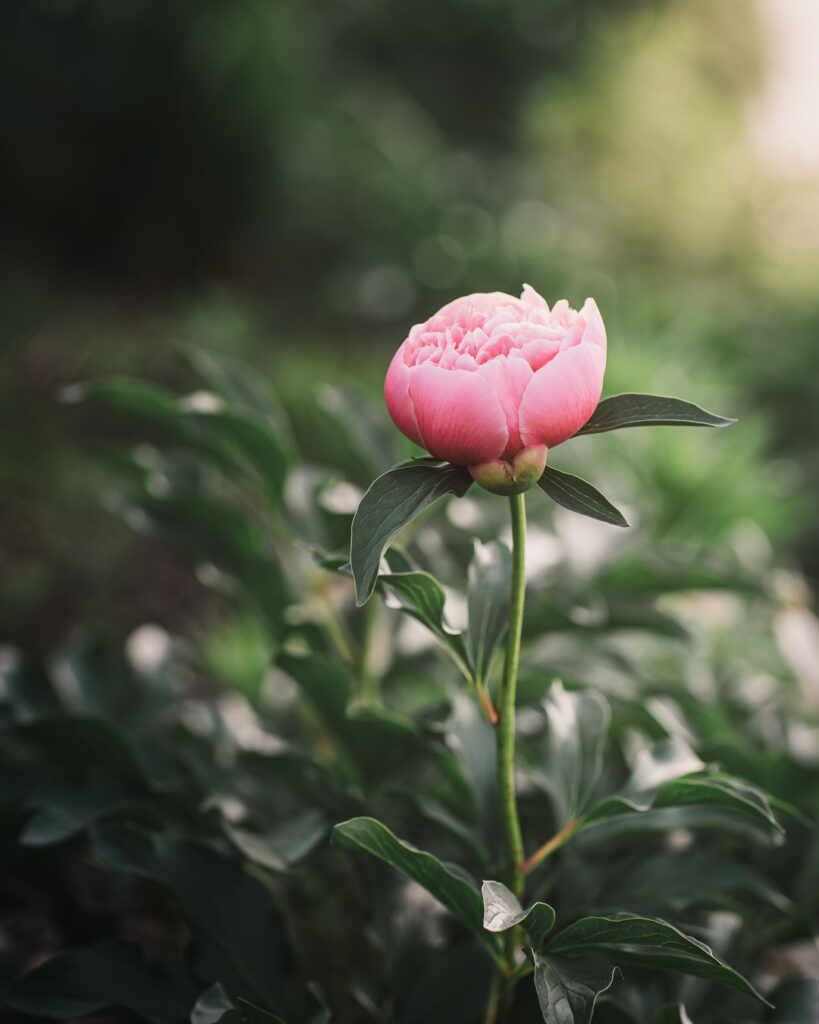
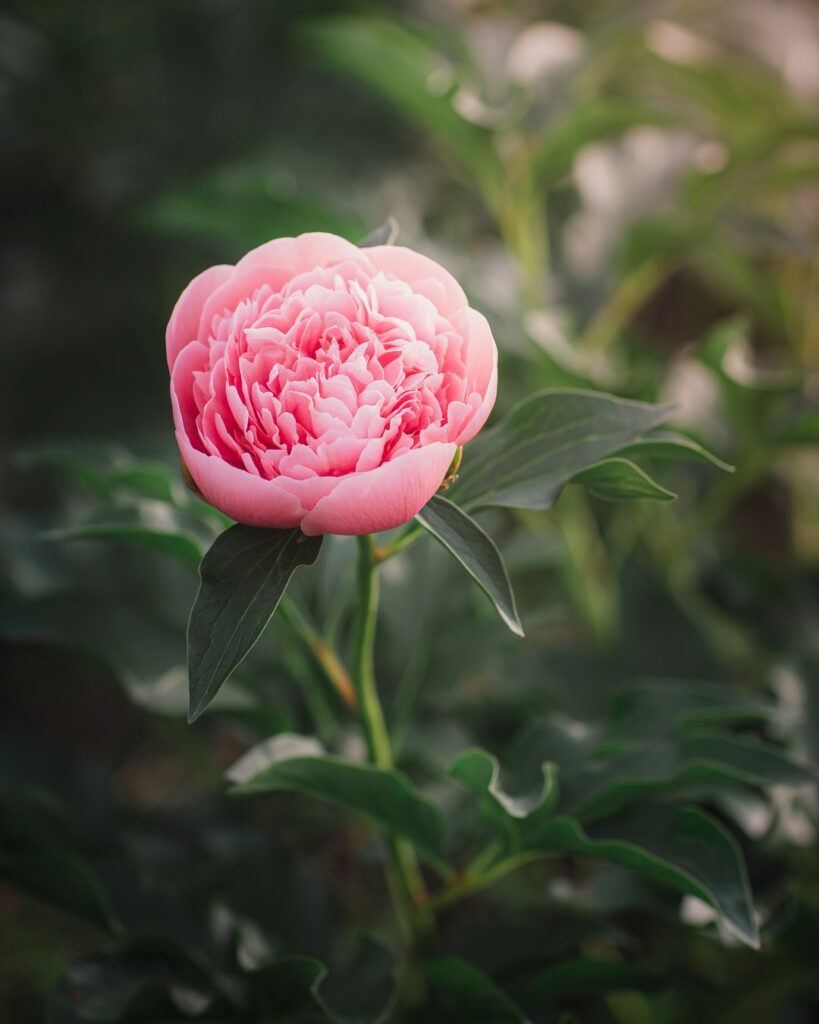
Business & Taxes
I originally removed this so as not to be redundant each month, but I’m thinking it’s important to keep it in:
Every month, I review our income and expenses and apply the profit first method (at least, that’s my goal). If you haven’t read the book, I highly suggest it, but basically for everything that comes in (revenue) you are making target allocation percentages for things like profit, owner’s comp, taxes, and expenses.
Table example:

It’s actually recommended to do this twice a month, but I honestly consider it a win if I do it once and bonus twice. If those terms are foreign, that’s OK (they were for me too). He breaks it all down in a simple (and even entertaining) way. My only regret with this method is not starting it sooner. It’s given me more confidence as a business owner, especially as I do not come from an entrepreneurial family. If you’re not ready to dive on into the book, it’s important to understand your income and expenses. I don’t even use a fancy system like quickbooks, just a spreadsheet!

Wrap Up
OK, my friend, that is IT for November. What do you think? Did you find some useful nuggets? Is there anything that’s unclear or you wish I would have covered?
This link will be live until the end of next month, at which point you’ll get a PDF copy, so you can always refer back it. You can also use the buttons below to save this as a PDF or print at any time.
Tip: use the find shortcut (Ctrl+F on a PC or Command+F on a Mac to search for any word or term either online or in PDF format).
Have any questions or something you want to share with me or others? I know I say this ad nauseam, but I truly believe in the power of the collective and that we all have something unique and powerful to share, so please leave a question or share a comment below. We’re all better for it, and I thank you in advance!
Cheers pal!
Somewhere you mentioned getting on wholesale lists ( for buying flowers) to see what your florists are currently paying. For the life of me I can’t find WHERE that was so thought I’d ask my question in the month we are currently in.
Would you have a list of some in Wisconsin ? I’m about 5 miles from Green Grove supply so not to far from you 😉 Been meaning to check into that but no idea where to start.
BTW I love your content! It’s really hard to find growers as cold as we are sharing info ( I’m not on social media) so I’m delighted when I come across somebody who does.
Yes, I got you! In general, I would say getting on *any* wholesale list is beneficial, but I’ll provide some specific examples too. While requirements can vary, in general, to get on a wholesale list/order wholesale you need a license to resell items and will typically need a tax ID. If you have that, you can sign up with just about any wholesaler with a resale certificate and by providing the proper information (each one will let you know what they require). For wholesale ordering (and pricing), I like to support other farms like Sunny Meadows Flower Farm, Grace Rose Farm (though these are specifically roses), and there’s a local collective in my area that does wholesale pricing through Pennycress Studios. Farm Exports is another great option and awesome folks to work with (review pricing as well). While I’ve never ordered from Mayesh, it’s easy to sign up and review wholesale prices too. If you don’t have a license, a great place to research wholesale prices is Boston Terminal Ornamental Prices (link). In most of the plant profiles, I list wholesale prices as well as include my own pricing. Finally, I just ask my florists! I have become really great friends with some of them and they’ll just send me all kinds of price lists 🙂
I hope that helps but please do not hesitate if you have any other questions. I am *so* happy to hear that the information is helpful. The benefit of cold weather is that it gives us a little reprieve come winter time. As soon as we are done with chores here, I am directing my attention to publishing articles I’ve been working on throughout the season. I’m so excited for this library to keep growing and it makes my heart happy you’ve found it helpful. Cheers!